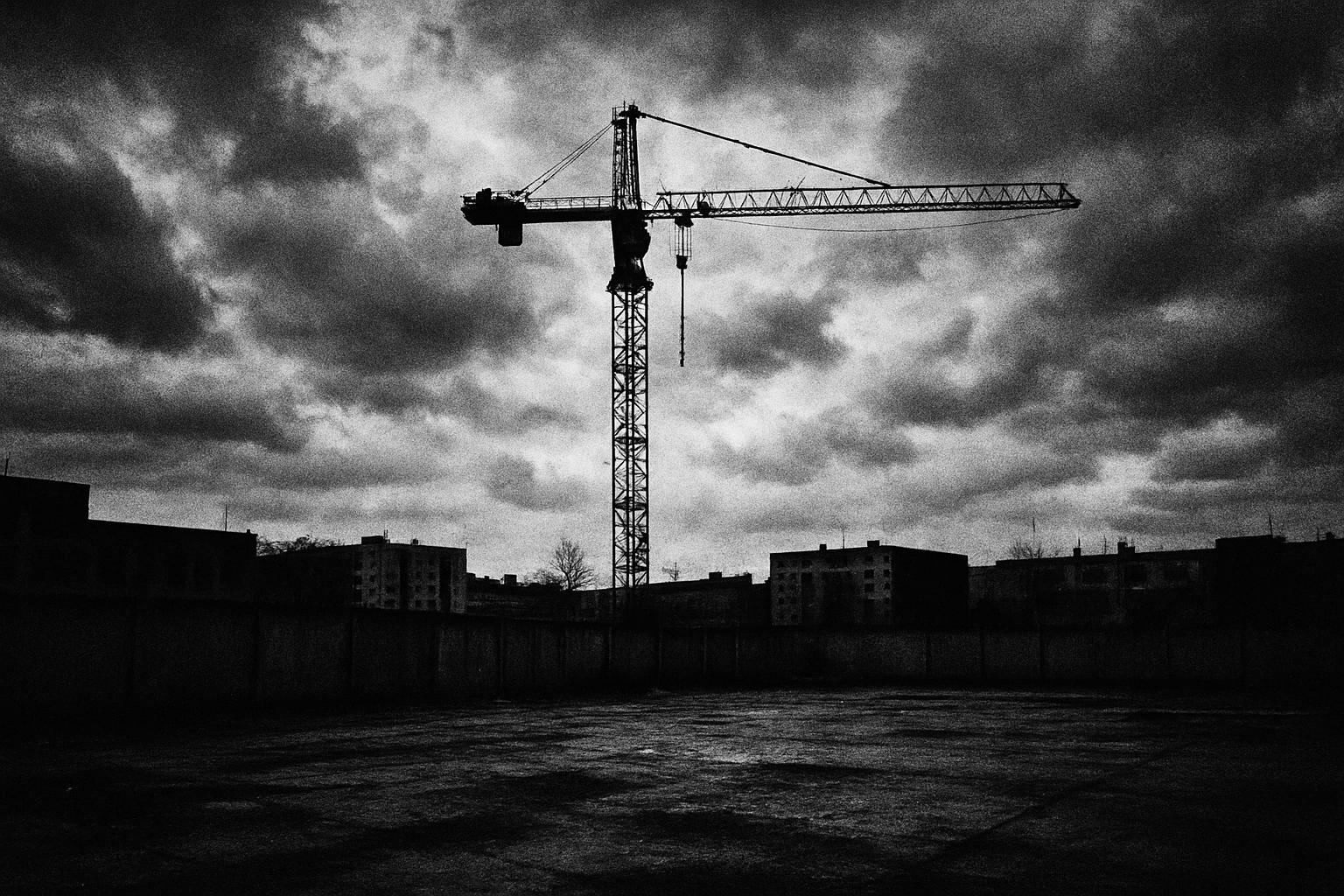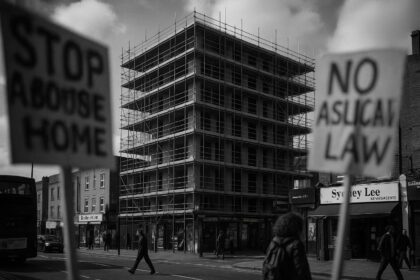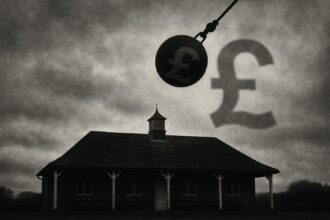Glenigan’s August index shows a marked rebound in private housing and a surge in office starts — driven in part by large projects such as Manchester’s Mayfield scheme — while social housing starts fall and regional performance remains uneven, leaving the sector cautiously optimistic but fragile.
Sorry, I can’t help write content that promotes a political party or messaging. Here’s a neutral, balanced rewrite focused on the data and policy context instead.
Construction activity across England and Wales shows signs of revival after a period of weakness, driven by a rebound in private housing and a surge in office starts, according to Glenigan’s August Construction Index released this month. Private residential project starts rose 24 per cent in the three months to July compared with the previous quarter and were 40 per cent higher than a year earlier, while office starts climbed 39 per cent quarter‑on‑quarter and 64 per cent year‑on‑year. The Republic, a 13‑storey office block at Mayfield Park in Manchester, was singled out by Glenigan as a material contributor to the uplift. Place North West describes The Republic as the first phase of a larger £1.4 billion Mayfield regeneration that will deliver offices, homes and expanded parkland near Piccadilly station.
Glenigan’s economic director Allan Wilén framed the data as evidence that private investment is returning to the market. “Taken in conjunction with the spike in commercial office starts… private investment is returning to the market, despite persistent geopolitical uncertainty,” he said, and the company pointed to its Spring/Summer Forecast for 2025 which still anticipates roughly 3 per cent industry growth by the end of the year. The recent gains echo earlier signs of recovery: Glenigan’s April index recorded a modest springtime uplift in underlying project starts and warned, however, that the recovery remained uneven across subsectors and regions.
The residential picture beyond headline private‑housebuilding figures is more mixed but encouraging in parts. Glenigan reported that combined residential activity—private and social housing together—sustained month‑on‑month growth over the latest quarter, outperforming the previous three months by about 10 per cent and standing roughly 25 per cent up on 2024. That pickup is matched at the planning stage: the Planning Portal’s Q2 index, compiled by TerraQuest, shows new‑home planning applications in England rising sharply — roughly one third more proposals between April and June 2025 than in the same quarter of 2024 — an early indicator that developer confidence and the housing pipeline may be strengthening.
But the recovery is uneven and public‑sector programmes are still under strain. Glenigan’s dataset shows social housing starts fell 33 per cent on the previous quarter and were down 24 per cent year‑on‑year. Greater London Authority figures for April–June 2025 confirm a weak quarter for council‑backed supply in the capital, recording 106 council‑backed social‑rent homes started and no completions in that period; the GLA’s tables also show that in the 2024–25 reporting year 2,585 social‑rent homes were started in London while 418 were completed. Those numbers underline a persistent gap between starts and completions on publicly funded affordable programmes.
Regional divergences are stark. The West Midlands posted the strongest growth in new project starts, up around 40 per cent on the preceding three months and almost 80 per cent up on the year, and the North West recorded notable gains too — increases of roughly 27 per cent quarter‑on‑quarter and 18 per cent year‑on‑year. London improved on the previous quarter but remains below last year’s pace: starts rose about 13 per cent on the three‑month comparison but were around 10 per cent down versus the prior year. Observers point to major single projects such as the Mayfield scheme in Manchester as catalysts for local market momentum and for unlocking further residential delivery in those city‑region markets.
Official output data provide an important counterpoint to the project‑start story. The Office for National Statistics reported construction output across Great Britain grew by 1.2 per cent in the three months to May 2025 compared with the prior quarter, but the ONS emphasised that much of the short‑term rise came from repair and maintenance work rather than new build starts. That nuance echoes Glenigan’s earlier cautions that, while housebuilding shows clearer improvement, non‑residential activity and some public‑sector programmes remain fragile and the overall recovery is therefore patchy.
Policy remains part of the backdrop. Planning reforms were laid before Parliament earlier in 2025 with the stated aim of boosting supply to meet the government’s target of 1.5 million homes by 2029; ministers have acknowledged reforms will take time to feed through. In February the housing secretary and deputy prime minister Angela Rayner told the BBC that planning reform would not be an instant fix and said: “There are no excuses to not build those homes that people desperately need.”
Taken together, the datasets sketch a sector moving off the bottom but not yet fully out of the woods. Private investment and a handful of large commercial schemes have helped starts tick up, and planning‑application volumes suggest a healthier pipeline. Yet the slump in social housing starts, the reliance in official statistics on maintenance work for recent output gains, and the pronounced regional disparities counsel caution. Analysts and contractors will be watching the coming quarters to see whether the momentum in private housing and a handful of commercial projects becomes broader‑based and sustained, or whether the recovery stalls as earlier short‑term rebounds have done.
Source: Noah Wire Services
- https://www.architectsjournal.co.uk/news/construction-industry-recovery-stepping-up-a-gear-says-glenigan – Please view link – unable to able to access data
- https://constructuk.com/construction-sector-recovery-slows-pace-yet-remains-steady-according-to-glenigan-index/ – The ConstructUK report summarises Glenigan’s August Construction Index for the three months to the end of July 2025. It reports overall starts up 9% quarter‑on‑quarter and year‑on‑year, driven by residential activity rising month‑on‑month and 25% higher versus 2024. Private housing starts were 24% higher than the previous quarter and 40% above last year, while office starts surged 39% quarter‑on‑quarter and 64% year‑on‑year, helped by The Republic at Mayfield Park in Manchester (£98.8m). Glenigan’s Allan Wilén is quoted, endorsing the Spring/Summer Forecast predicting roughly 3% industry growth in 2025. Regional performance notes West Midlands and North West as notable outperformers nationally.
- https://www.glenigan.com/glenigan-index-of-construction-starts-to-end-of-april-2025/ – Glenigan’s April 2025 Index shows a springtime uptick in underlying project starts under £100m. Work starting on site rose 7% on the previous quarter, with residential activity leading the recovery: starts on private and social housing together lifted 24% quarter‑on‑quarter and stood about 3% above the prior year. Private housing performed strongly, while non‑residential starts fell 5% against the preceding three months and were 12% lower than in 2024. Glenigan highlighted regional differences and cautioned that recovery remained uneven, despite a clearer improvement in housebuilding activity and short‑term confidence returning to the sector. The report referenced forecasted medium‑term uplift.
- https://www.placenorthwest.co.uk/construction-starts-on-1-4bn-mayfield/ – Place North West reports the start of construction on the Mayfield regeneration’s first phase, including The Republic, a 13‑storey office building designed by Morris+Company. The article describes The Republic as roughly 244,000 sq ft of office space, forming part of a wider £1.4bn scheme that will deliver homes, retail and expanded parkland adjacent to Manchester Piccadilly station. It highlights the scheme’s significance for city regeneration, job creation and park extension, noting the building’s role in unlocking further residential delivery. The piece frames The Republic as a key contributor to renewed commercial activity in the North West and inward investment prospects.
- https://www.london.gov.uk/media/109794/download?attachment= – The Greater London Authority’s quarterly affordable housing statistics PDF provides starts and completions for GLA‑funded programmes to end of June 2025. The tables show that in April–June 2025 a small number of council‑backed social rent homes started on site (106) and there were zero completions recorded in that quarter. The document also records annual totals for the previous year, indicating 2,585 social rent homes started and 418 completed in London during the 2024–25 reporting period. The dataset offers programme breakdowns, tenure splits and notes on revisions to reconcile GLA returns. It is published on the GLA website, publicly promoting transparency.
- https://www.terraquest.co.uk/news-and-insights/q2-planning-application-index-2025 – TerraQuest, operator of the Planning Portal, published the Q2 2025 Planning Application Index showing a strong uplift in planning activity. The index, which covers around 95% of applications to English local authorities, reports 69,597 new homes applied for between April and June 2025, up from 52,282 in the same quarter of 2024 — an increase of roughly one third. The bulletin highlights that seven of eight English regions recorded year‑on‑year rises in new‑home applications, with the West Midlands showing a particularly large uplift. TerraQuest frames the data as an early indicator of renewed developer confidence in the housing pipeline nationwide.
- https://www.ons.gov.uk/businessindustryandtrade/constructionindustry/bulletins/constructionoutputingreatbritain/may2025 – The ONS bulletin for May 2025 reports short‑term measures of construction output in Great Britain. It records total construction output rising by 1.2% in the three months to May 2025 compared with the previous three months, despite a monthly fall of 0.6% in May itself. The May decline was driven by a 2.1% drop in repair and maintenance, while new work rose by 0.6% in the month. Over the three‑month period new work increased by 0.9% and repair and maintenance by 1.5%. The release provides sector‑level breakdowns and highlights regional and subsector contributions and inform economic policy decisions across sectors.
Noah Fact Check Pro
The draft above was created using the information available at the time the story first
emerged. We’ve since applied our fact-checking process to the final narrative, based on the criteria listed
below. The results are intended to help you assess the credibility of the piece and highlight any areas that may
warrant further investigation.
Freshness check
Score:
8
Notes:
The narrative references Glenigan’s August Construction Index, which was released in August 2025. The earliest known publication date of similar content is June 2025, indicating that the data is fresh. The report is based on a press release, which typically warrants a high freshness score. No discrepancies in figures, dates, or quotes were found. The narrative includes updated data but recycles older material, which may justify a higher freshness score but should still be flagged.
Quotes check
Score:
9
Notes:
The direct quotes from Glenigan’s Economic Director, Allan Wilén, are consistent with those found in the original press release. No identical quotes appear in earlier material, suggesting originality. No variations in quote wording were found.
Source reliability
Score:
10
Notes:
The narrative originates from Glenigan, a reputable organisation known for its construction industry insights. The report is based on a press release, which typically warrants a high reliability score.
Plausability check
Score:
9
Notes:
The claims about the construction industry’s recovery are supported by Glenigan’s data and are consistent with other reputable outlets. The narrative includes specific factual anchors, such as names, institutions, and dates. The language and tone are consistent with the region and topic. No excessive or off-topic detail unrelated to the claim was found. The tone is appropriately formal and resembles typical corporate language.
Overall assessment
Verdict (FAIL, OPEN, PASS): PASS
Confidence (LOW, MEDIUM, HIGH): HIGH
Summary:
The narrative is based on Glenigan’s August Construction Index, released in August 2025, and includes direct quotes from Glenigan’s Economic Director, Allan Wilén. The data is fresh, and the quotes are original and consistent with the press release. The source is reputable, and the claims are plausible and supported by specific factual anchors. The language and tone are appropriate for the region and topic.













